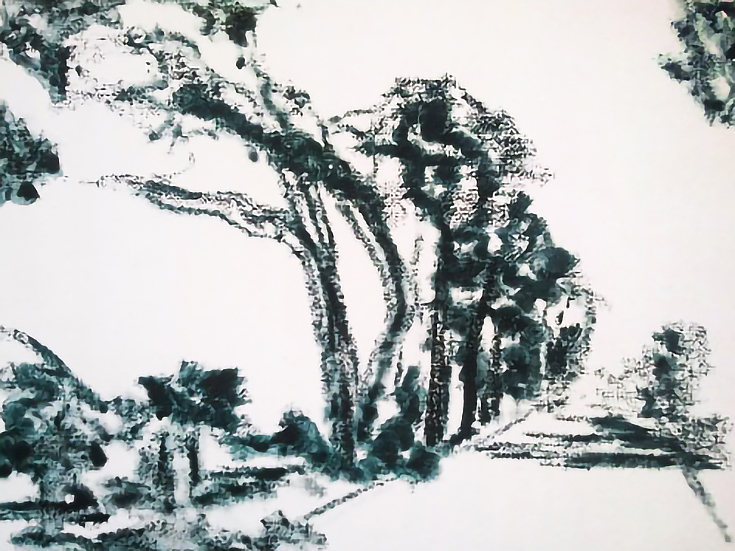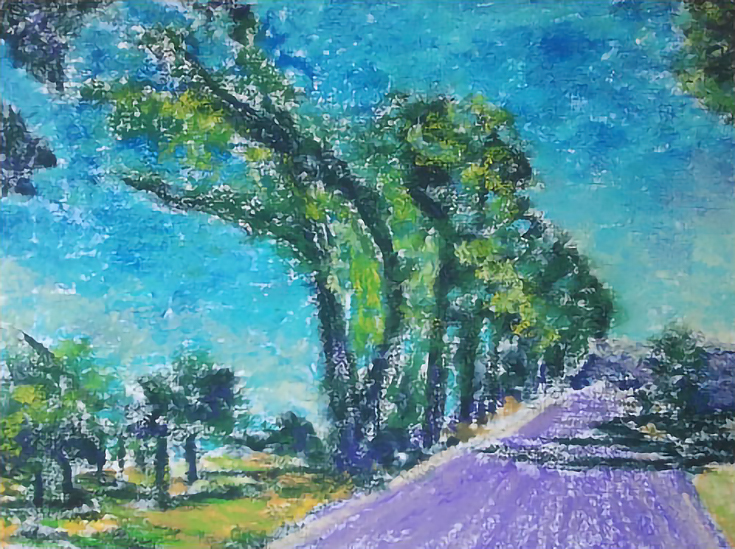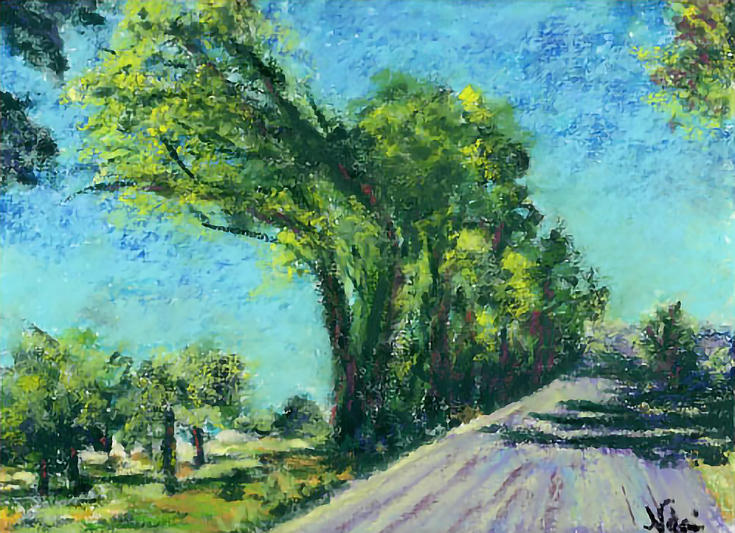Chalk pastels (also called “soft” or “dry” pastels) are known for their brilliant colors, but sometimes all that color can turn into a muddy mess after a few layers. The good news is, adding just a little water before you apply pastels to your surface will allow you bring out those brilliant lights and darks you see beckoning from your pastel box.
If you’d like to create a textured, impressionist feel in your next pastel paintings, take a little time to explore the following technique. You’ll need a small flat canvas, soft/chalk pastels, fixative, and a small container of water.
Step 1. Make your drawing
Choose a small piece of flat canvas (9×12 works great). Brush your flat canvas with a light coat of water. Apply a dark value pastel directly to the wet canvas to make a notan-style drawing, emphasizing your big shapes and filling in where you anticipate your dark shadows will go.
If the water dries before you finish, either re-wet the area you need to work on, or dip your pastel sticks directly in your water cup before applying it to the surface. Lay your work flat and allow your drawing to dry thoroughly.
NOTE: If you don’t like white, another option is to cover your canvas before you begin your drawing with a light wash of acrylic paint. That color will show through as you add each subsequent layer of pastels.
Step 2. Complete your underpainting
Decide on a basic color scheme and begin working in your middle values and darks, dipping your pastel sticks in water as you go. Cover the areas where you plan to use lights with just a touch of pastel, using more water to keep the color light.
If you like a textured, scratchy look, you can leave some areas white—just make sure you do it consistently! When complete, this layer will look like a wet watercolor painting. Set it aside (keep it flat) and allow it to thoroughly dry before continuing.
Step 3. Begin working with dry pastels
Take your dried painting and begin working in your bright colors, lights, and darks, filling out shapes and adding texture and patterns with your pastel strokes as you work. For a softer look, blend lightly wherever you want less texture visible.
If you feel like you’ve lost your darks or need to make your lights stand out more, go ahead and dip your dark pastels back into the water and touch up your shadows or make new dark details to brighten your lights (but keep the water to a bare minimum). Once your painting feels dry to the touch, take it outside and give it a layer of fixative. Be sure to carefully follow directions on the can when using fixative!
NOTE: If you don’t like the bits of canvas that might peek through the pastel, apply your pastels in the same direction as the natural texture of the canvas so there is less resistance, then blend it lightly.
Step 4. Finish with strong lights and contrasting colors
Use your lightest lights and some carefully placed contrasting color to add the finishing touches. If you like, add another light spray of fixative during this process.
You can always do light touch-ups of your shadows with a wet pastel stick if you want to make small changes. Just make sure to top your final touches with a few bright lights for emphasis.
Once you’re finished, decide where you’ll sign your work, and then frame your painting under glass to preserve the pastels!
This post may contain affiliate links.




